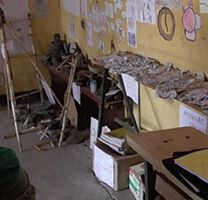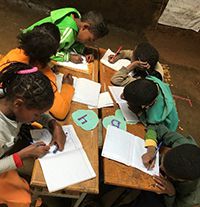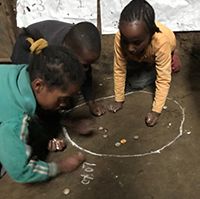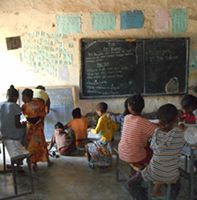Adoption of the Second Chance Education Programme in Ethiopia
Starting in February 2020, this project is a process evaluation over three years of the adoption and scale-up of the Second Chance (SC) Education programme for Out-Of-School-Children by the Government of Ethiopia in four implementing regions.
 It will help to address the kinds of problems the government-led implementation may be encountering in terms of facilitator training, resource-management and any regional differences in classroom pedagogic practices and provide ongoing insights into the process of scaleup for the government and the Luminos Fund.
It will help to address the kinds of problems the government-led implementation may be encountering in terms of facilitator training, resource-management and any regional differences in classroom pedagogic practices and provide ongoing insights into the process of scaleup for the government and the Luminos Fund.
This project is led by PI Professor Kwame Akyeampong (recently moved to the Open University), with Dr Jo Westbrook and Dr Sean Higgins from CIE, working with a group of independent Ethiopian researchers and funded by the Luminos Fund.
The project uses:
 Document review – training manual and related support materials
Document review – training manual and related support materials- Whole class observation of government adoption classrooms and a sample of direct delivery classrooms by local NGOs noting differences in teachers’ pedagogical practice and learning experiences between different group of learners
- Observation of trainings for government facilitators and officials
- Key informant interviews with government officials, school principals and facilitators, and implementing partners responsible for training government partners
- FGDs and interviews with students in government adoption classes
- FGDs with a sample of parental and community engagement groups.
 Overarching Evaluation Question:
Overarching Evaluation Question:
What are the overall lessons at this stage in the adoption process for scaling up government-run Second Chance classes in terms of pedagogy and classroom setup, training and support strategy?
- What goes into the training and ongoing support for SC government facilitators and partners to deliver the program?
- Which aspects of the SC pedagogy and model translate well in government schools and classrooms?
- How do the learning experiences of students in the government adopted SC classrooms differ by gender, ability, and disability?
 How and to what extent do different groups of learners use their skills and knowledges gained from second chance to support their resilience in government schools?
How and to what extent do different groups of learners use their skills and knowledges gained from second chance to support their resilience in government schools?- What are the perceptions of parents and communities about government-led SC education and its significance for sustainability and impact?
- What unanticipated additional activities or adaptations are needed to improve the efficient and effective delivery of government-led SC programs?